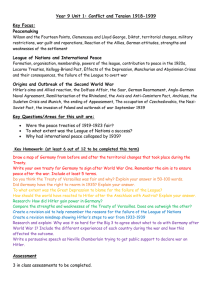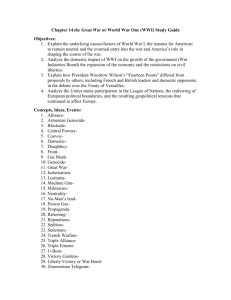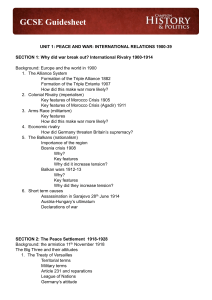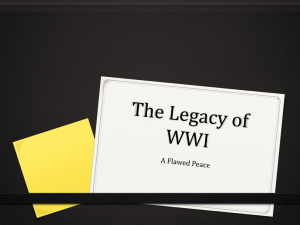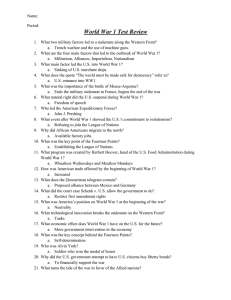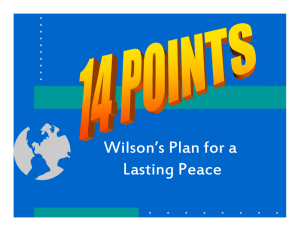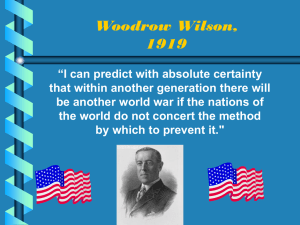How do I answer this type of question help sheet Unit one
advertisement
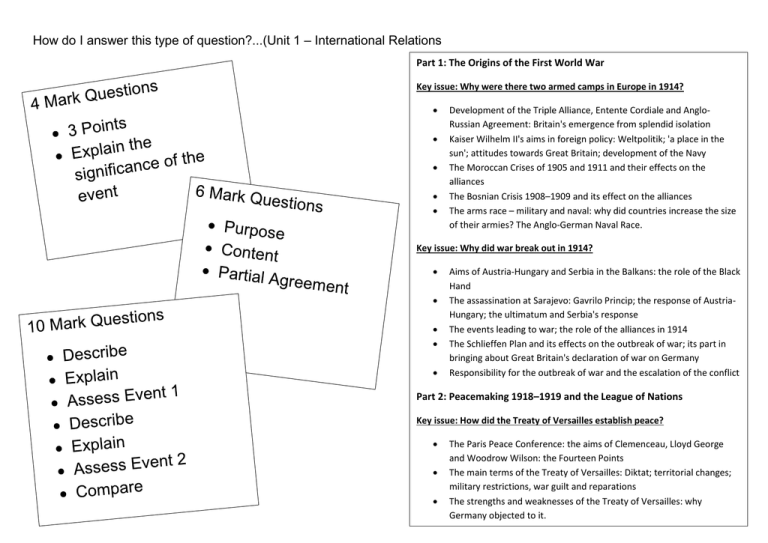
How do I answer this type of question?...(Unit 1 – International Relations Part 1: The Origins of the First World War Key issue: Why were there two armed camps in Europe in 1914? Development of the Triple Alliance, Entente Cordiale and AngloRussian Agreement: Britain's emergence from splendid isolation Kaiser Wilhelm II's aims in foreign policy: Weltpolitik; 'a place in the sun'; attitudes towards Great Britain; development of the Navy The Moroccan Crises of 1905 and 1911 and their effects on the alliances The Bosnian Crisis 1908–1909 and its effect on the alliances The arms race – military and naval: why did countries increase the size of their armies? The Anglo-German Naval Race. Key issue: Why did war break out in 1914? Aims of Austria-Hungary and Serbia in the Balkans: the role of the Black Hand The assassination at Sarajevo: Gavrilo Princip; the response of AustriaHungary; the ultimatum and Serbia's response The events leading to war; the role of the alliances in 1914 The Schlieffen Plan and its effects on the outbreak of war; its part in bringing about Great Britain's declaration of war on Germany Responsibility for the outbreak of war and the escalation of the conflict Part 2: Peacemaking 1918–1919 and the League of Nations Key issue: How did the Treaty of Versailles establish peace? The Paris Peace Conference: the aims of Clemenceau, Lloyd George and Woodrow Wilson: the Fourteen Points The main terms of the Treaty of Versailles: Diktat; territorial changes; military restrictions, war guilt and reparations The strengths and weaknesses of the Treaty of Versailles: why Germany objected to it. Key issue: Why did the League of Nations fail in its aim to keep peace? Membership 1919–1939: why and how it changed; implications for the League of Nations Organisation, powers and peace keeping role: the Assembly; the Council; the Permanent Court of Justice; military and economic sanctions The Manchurian Crisis 1931–1933: events; action taken by the League; effect on the League as a peace keeping force The Abyssinian Crisis 1935–1936: events; action taken by the League; effect on the League as a peacekeeping force The reasons for the collapse of the League Part 3: Hitler’s foreign policy and the origins of the Second World War Key issue: How did Hitler challenge and exploit the Treaty of Versailles 1933– March 1938? Hitler's aims in foreign policy The return of the Saar, 1935 The beginning of rearmament in Germany: withdrawal from the Disarmament Conference 1933; non-aggression Pact with Poland 1934; reintroduction of conscription from 1935; Anglo-German Naval Agreement 1935 The remilitarisation of the Rhineland 1936 The Anschluss with Austria 1938. Key issue: Why did Chamberlain's policy of appeasement fail to prevent the outbreak of war in 1939? Reasons for and against appeasement The Sudeten Crisis and Munich Agreement, 1938 The collapse of Czechoslovakia March, 1939 The role of the USSR 1938–1939: the Nazi-Soviet Pact Poland and the outbreak of war Responsibility for the outbreak of war. Part 4: The Origins of the Cold War 1945–1955 Key issue: Why did the USA and USSR become rivals in the years 1945–1949? Ideological differences and their effects The Yalta and Potsdam Conferences The dropping of the atom bomb and its effects: Hiroshima and Nagasaki The Iron Curtain: Soviet expansion in the East; Czechoslovakia, 1948 The Truman Doctrine: the situation in Greece and Turkey; the purpose of Truman Doctrine The Marshall Plan: effect of Marshall Aid and the Soviet response; Cominform and Comecon; Yugoslavia The Berlin Blockade and Airlift. Key issue: How did the Cold War develop in the years 1949–1955? The formation of NATO: its membership and purpose The nuclear arms race: atom bomb; hydrogen bomb The Korean War, 1950–1953: reasons for involvement of UN and USA; the role of MacArthur; the part played by USSR and China The 'Thaw': death of Stalin; Austria; Khrushchev's policy of peaceful coexistence The formation of the Warsaw Pact: membership and purpose.

